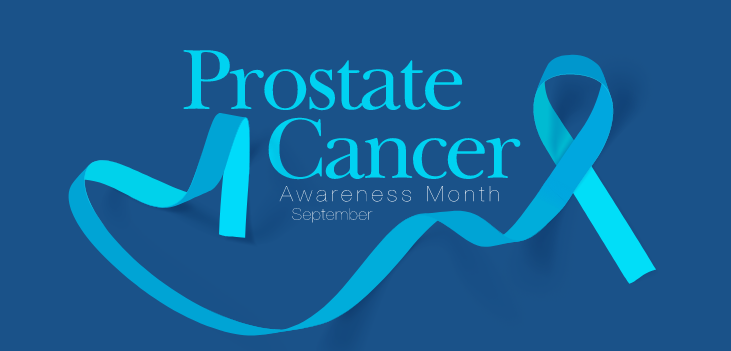
Prostate cancer is the second most common form of cancer in American men behind skin cancer and the second leading cause of death in men. The American Cancer Society estimates that 1 in 8 men in the United States will be diagnosed with prostate cancer with the following statistics for 2023:
- About 268,490 new cases of prostate cancer
- About 34,500 deaths from prostate cancer
At Profound Medical, we are committed to educating the public and raising awareness about prostate cancer testing, treatment options, symptoms, and risk factors.
What is Prostate Cancer?
The prostate is a walnut-sized gland located below the bladder and surrounding the urethra (the tube that carries urine out of the bladder). The prostate is responsible for producing and storing the fluid that makes semen. Prostate cancer is diagnosed when there is a malignant (uncontrolled) growth of cells in the prostate gland.
Some of the risk factors include:
- Family history – Especially in men whose first-degree relatives (father or brother) have been diagnosed with prostate cancer.
- Age – Prostate cancer is more common in older men, with the average diagnosis age at 66. The condition is rare for men under the age of 40.
- Race – African-American men are at higher risk for prostate cancer.
Prostate Cancer Symptoms
Prostate cancer, in its early stages, often has no symptoms. Because of this, prostate cancer frequently goes undetected. When prostate cancer remains undetected, there’s a risk of the cancer spreading to the bones, tissues, and other surrounding structures. This highlights the importance of prostate screening to catch cancer early on before it spreads and symptoms arise.
Symptoms may include:
- Frequent urge to urinate
- Frequent urination at night
- A weak or slow urine stream
- A feeling that the bladder is not completely empty after urinating
- Difficulty starting urination
- A urine stream that starts and stops
- A continued and uncontrolled dribble of urine
- Painful or burning sensation with urination
- Blood in urine or semen
- Pain or discomfort in the lower back, hips, and pelvic area
- Painful ejaculation
Although the above symptoms could occur due to prostate cancer, they do not necessarily mean the patient has prostate cancer. These symptoms could arise from other prostate issues that are not cancerous, including an inflamed or enlarged prostate, Benign Prostatic Hyperplasia (BPH), a bacterial infection, or chronic pelvic pain syndrome.
For this reason, it is important to see your doctor if you are experiencing any of the above.
The Importance of Prostate Cancer Awareness Month
Prostate Cancer Awareness Month, observed in September in many countries, is a time for medical professionals, health advocates, patients, and survivors to join forces and make a concerted effort to bring attention to this significant men’s health issue. Here are a few reasons why this awareness month is important:
- Educating the Public – The awareness month serves as a platform to educate people about prostate cancer – what it is, who is at risk, the symptoms, and prevention strategies.
- Highlighting the Importance of Early Detection – Early detection of prostate cancer significantly increases the chances of successful treatment. Prostate Cancer Awareness Month is a critical time to emphasize the importance of regular screening and to discuss screening options, such as the prostate-specific antigen (PSA) test.
- Discussing Treatment Options – Prostate Cancer Awareness Month provides an opportunity to discuss various prostate cancer treatment options. Knowing about these treatments can help patients make more informed decisions and potentially reduce anxiety about what lies ahead.
- Sharing Stories – The campaign allows survivors, patients, and families to share their stories, providing inspiration to others going through a similar journey. It helps to foster a sense of community and lets those affected know they’re not alone.
- Promoting Research – By bringing attention to prostate cancer, the awareness month also helps raise funds for research into new treatments and potentially a cure for the disease. These research efforts can also impact prostate procedures and promote treatments for other prostate conditions, such as the TULSA procedure.
- Encouraging a Healthy Lifestyle – The campaign provides an opportunity to discuss lifestyle factors that may impact prostate cancer risk, such as diet and physical activity, and to promote a healthier lifestyle that might contribute to overall prostate health.
Prostate Cancer Testing
Your doctor may speak to you about prostate cancer screening and further testing if you are experiencing symptoms or have certain risk factors for developing prostate cancer. Some examples of prostate cancer testing include:
- Digital Rectal Exam (DRE) – The most common procedure that involves your doctor inserting a lubricated, gloved finger inside your rectum to identify any lumps or soft or hard spots on the prostate gland. Although a DRE can be uncomfortable, it is a quick test that typically lasts less than a minute.
- Prostate-Specific Antigen (PSA) Test – A PSA test is a blood test that measures the amount of PSA in your blood, which is a specific type of protein produced by the prostate. Patients with prostate cancer have a high amount of PSA in their blood, though it’s important to know that an elevated PSA count does not necessarily lead to a cancer diagnosis. A PSA test is simply a test that can provide your doctor with more information and help determine whether further testing is needed.
- Prostate Screening – Involves looking for prostate cancer before a patient experiences any symptoms. The goal here is to detect cancer early and before it spreads. The decision to undergo screening is personal and should only be made after you’ve spoken with your doctor about your risk factors and have all of the information you need.
- Urinalysis – A urine sample to test for abnormal substances or signs of infection. If an infection is present, your doctor may ask for a second urine sample to identify where the infection is located.
- Abdominal Ultrasound – During an abdominal ultrasound, the healthcare provider applies a gel to your abdomen, allowing a transducer device to glide effortlessly over the skin. The ultrasound images can show any abnormalities in the urinary tract and provide your doctor with more information about your symptoms.
- Transrectal Ultrasound – During a transrectal ultrasound, a narrow transducer is inserted into the rectum next to the prostate. The images from a transrectal ultrasound can show the prostate’s size and any abnormalities such as tumours.
While the above tests can help your doctor detect non-cancerous prostate conditions or other non-prostate-related complications, they are not meant to diagnose prostate cancer. Rather, these tests can act as a basepoint for your doctor to determine whether further testing for prostate cancer is needed.
These tests can include:
- MRI and CT scan – MRIs and CT scans provide images of the body’s internal organs and soft tissues without X-rays. These detailed radio wave images can identify abnormal structures but cannot differentiate between cancerous tumors and noncancerous enlargements.
- Prostate Biopsy – A biopsy can reveal whether prostate tissues are cancerous. A biopsy involves taking pieces of prostate tissue which are sent to a lab and examined by a pathologist, a doctor who specializes in the diagnosis of disease. If abnormal cells or cancer are found, the next step is to grade the prostate cancer using the Gleason Score, which will help your doctor determine your treatment options or how often you’ll need future screenings.
The Gleason Score plays a crucial role in assessing the growth and aggressiveness of prostate cancer, making it a vital tool for doctors to determine the appropriate treatment plan.
Prostate Disease Treatment Options
Most prostate cancers are low-risk with slow growth or no growth at all, making survival rates good for this type of cancer. However, some types are aggressive and can spread quickly. Depending on the level of risk, the following have been shown to be effective treatments for prostate cancer and other prostate diseases:
- Watchful waiting
- The TULSA Procedure
- High-Intensity Focused Ultrasound (HIFU)
- Surgery
- Radiotherapy
- Chemotherapy
- Immunotherapy
- Cryotherapy
One of the best things you can do for your prostate health is to be proactive and gather information from trusted resources. It’s important to advocate for yourself and discuss with your doctor your risk factors, any symptoms you may be experiencing, and whether screening is right for you.
How to Observe Prostate Cancer Awareness Month
During the month of September, local and national organizations take part in activities to raise awareness of prostate cancer. Here’s what you can do to participate and help spread awareness about prostate cancer:
- Talk to your partner, family member, or friend about prostate health.
- Follow accounts on social media and hashtags dedicated to prostate cancer.
- Share posts, blogs, and resources on social media.
- Visit Men’s Health Network to read about facts and statistics.
- Stay updated with the American Cancer Society about the latest statistics.
- If you’re a male aged 40 years or older, talk to your doctor about your risk factors for prostate cancer.
- Read Tulsa Procedure’s blog to learn more about prostate cancer and men’s health.
Blog posts from Profound Medical are for general information only. The content should not be considered medical advice. If you are in need of professional medical advice or assistance, please reach out to your local doctor or clinic.
Sep 1, 2023 | TULSA Procedure

